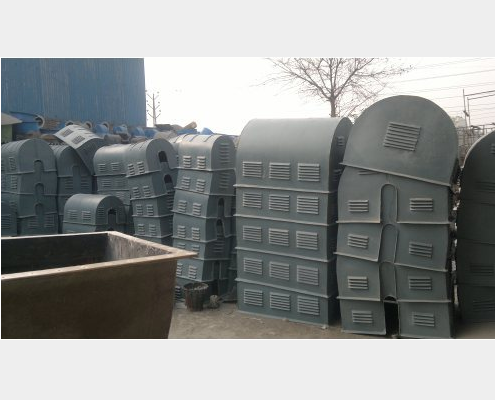FIBRE REINFORCED Plastic resin system is a composite material consisting of a network of reinforcing fibres embedded in a matrix of thermosetting resin. Other materials such as fillers and pigments may also be present, although they are not an essential part of the composite.
In general, the resin used consists of a syrupy liquid which, when combined with a suitable catalyst or hardener, can be cross-linked into a hard infusible solid. By impregnating the fibrous material, frequently in the form of a cloth or mat, with the catalyzed resin and allowing the resin to cure, the composite material or laminate is formed. This process is carried out in a MOULD which may be open or closed. The resultant product is a fully cured moulding which is an exact replica in reverse of the original mould surface.
Why FRP?
The answers to this question are many and varied and may be simple or complex. Indeed, with the family of materials which can be classified as FRP, one should not expect a simple answer.
If we consider firstly glass reinforced polyester resins, then it is possible
- To summarize the advantages as follows:
- Thermoset.
- Advantageous strength/weight ratio and rigidity.
- Moulding size virtually unlimited.
- Ease of fabrication.
- Wide range of manufacturing techniques.
- Low capital outlay-for hand lay-up.
- One-off or few-off mouldings are possible at reasonable cost.
- Considerable design versatility.
- Can be combined with other materials, e.g. foams for buoyancy.
- Excellent water resistance.
- Resistant to a wide range of chemicals.
- Resistant to weathering and UV exposure.
- Can be colored to give a maintenance-free finish.
- Fire retardant-if required.
- Transparent/translucent-if required.
- Good electrical and thermal properties.
Use of Mould Release Wax Polish in FRP Products
Mould Release Wax Polish is a product manufactured by using many different chemicals, with balanced properties to get the desired performance. Polish is used for Protecting and Shining many different things right from Shoes, automobiles to furniture.
For each application the properties are to be modified
For Example: Shoe Polish cannot be used for Polishing Car or Car polish cannot be used on Furniture.
Each application requires different polish. It is imperative to design the polish based on application.
One such Area where very different property of polish is required is the moulding field. Here polish is used as a release agent. The outstanding adhesion of Moulding resins to other materials requires high performance release agent. A release agent is necessary in order to easily and quickly remove the moulded part. The properties required are very different and are very difficult to achieve. One has to Compromise on some properties and balances the same to get desired Polish (release agent), only then you are assured a complete Polish (release agent) for Moulding Industry.
The effectiveness of Polish (release agent) depends less on the amount than on the uniformity of the coating. The Polish (release agent) has to be tailored by understanding the moulding operation, its limitation and overall process. The Chemicals used are different, processing is different, and end use of product is also very different.
So many parameters are to be understood and then only one can hope to develop the required polish.
The outstanding adhesion of Moulding resins to other materials requires high performance release agent. A RELEASE AGENT is necessary in order to easily and quickly remove the moulded part.

